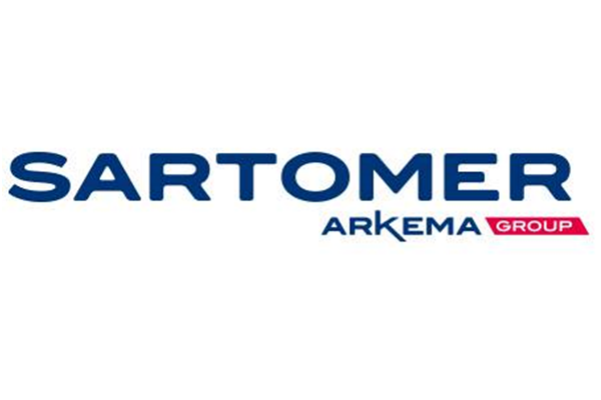M.Eng. Student Cohort
Join the Cornell MSE M.Eng. cohort: Apply now!

Sarah Chay
Project Abstract: The heating and cooling industry suffers $20 billion worth of energy losses every year to inefficient window insulation. AeroShield has developed a super-insulating, ultra-clear silica aerogel that can be sealed into an existing double-pane window and has proven to be 50% more energy efficient than current window solutions. As the company begins scaling up production of this material, however, they face challenges on how to maintain its desired thermal and optical properties on an industrial scale. When aerogel sheets are cast and processed, the sheet can shrink by as much as 20% linearly, which leads to undesirable cracking and warping. AeroShield has developed a new synthesis technique that has reduced shrinkage of the silica aerogel 7x compared to the original material, greatly reducing cracking. In this project, we aim to characterize the mechanical, physical, and chemical properties of this modified aerogel. Tests performed on each sample will yield compressive and tensile strength, hardness, density, and surface functionalization measurements. We will compare our results to those of the original aerogel in order to identify and determine the differences leading to reduced shrinkage, which will help enable the manufacturing of this new material on an industrial scale.

Eileen Cheong
Project Abstract: Diffractive optical elements (DOE) are widely used with laser to be used in laser beam shaping. The laser beam shaping are used for many applications in materials processing, sensing, contactless testing and optical metrology. Recently, DOEs are also being used in the field of aesthetic treatments. The needs for DOEs that are smaller in size and better in performance are increasing as today’s electronics getting smaller at a very fast pace. However, as DOEs use complex micro and nano-scale surface relief structures with several levels to achieve desired optical functions, DOEs need to downsize to nanometer scales and precise alignment. This means that different characteristics and specifications of the DOEs should change in order to work with the small feature sizes of DOEs. With the help and support from ams OSRAM, this project aims to develop DOEs for next generation with compact, cost-effective, and highly efficient optical modules using fabrication processes such DUV, iLine stepper, RIE, and more. Then the DOEs will be characterized using AFM, SEM, FIB, and more. The fabrication processes and the characterization methods will be performed at the CNF facilities located at Cornell. With these project, I am hoping that the developed DOEs will find applications in various consumer electronic devices.

Mumtaziah Faaz
Project Abstract: The world is shifting to electric vehicles to mitigate climate change. The technological progress and favorable policies have led to a massive increase in the demand for EVs. Hence, the need for lithium-ion batteries (LIBs), as the dominant energy storage technology for EVs, is also increasing. A recent study found that in a lithium nickel cobalt manganese oxide-dominated battery scenario, demand is estimated to increase by 18-20 for lithium and 17-19 for cobalt from 2020 to 2050i. The prospected market in certain elements could lead to challenges of issues supply on Earth. With limited terrestrial resources and increasing demand, a shortage in lithium and cobalt could happen in the future, even considering recycling of these elements, which is unlikely to cover short-term supply.ii One possible solution is to extract the elements from seawater, where many elements have more abundance and uniform distribution than the Earth’s crust, where they exist with nonuniform concentrations. The oceans contain 5,000 times more lithiumiii and 70 times more cobaltiv than land. The vast opportunity to harvest the elements in seawater is also supported by how excessive heavy metal contaminants could significantly impact human health and the environment, which brings the idea of how sustainable the impact in mineral extraction at the ocean. The SEA Lab has researched extracting uranium from seawater using the Symbiotic Machine for Ocean uRanium Extraction (SMORE), which utilizes polymer adsorbents such as amidoximev. Recent work in the lab has also shown that SMORE could be redesigned to extract lithium and cobaltvi. The SMORE system uses rollers to continuously move the adsorbent to avoid biofouling on the polymer, which can occur when the polymer adsorbent is static. Therefore, this project aims to optimize the SMORE system by modifying the available polymer adsorbent with additional anti-fouling resistance instead of a roller that creates dynamic movement. The material used in the project is polyethylene fiber which is the raw material of the mineral extractor. It will be modified with two methods for testing anti-fouling properties: additional UV grafting and additional amphiphilic peptoid coating. The output of this project will be a material selection between untreated, UV irradiated, and peptoid coated amidoxime that excels in these three parameters: (i) the anti-fouling capacity, (ii) the lifecycle performance, and (iii) cost-effectiveness.

Henry Harwood
Project Abstract: As proceed towards an electrification of our global society and seek to decarbonize our energy production, solar energy will play a pivotal role. One of the recently emerged photovoltaic (PV) technology is perovskite. Perovskites are notable for their drastic increase in efficiency from 3% to upwards of 26% in the past decade, their ability to be formed and deposited via wet chemistry methods, and the low cost of materials needed for fabrication. However, one of the greatest challenges facing perovskites is their stability.
When exposed to air, moisture, and heat, perovskite lattices may phase transit into non-photoactive phases. One preparation method that begins to tackle the issues of stability while also offering additional functionality are perovskite colloidal quantum dots (CQD). The increased stability of perovskite CQDs comes from the surface energy of QDs making the photoactive cubic phase stable over the orthorhombic phase at ambient temperature. [2] CQDs also offer the benefits of a highly tunable band gap, flexible surface functionalization, and more that are still being discovered.

Junyi Jiang
Project Abstract: Optical metasurfaces are artificially engineered 2D nanostructures that can manipulate electromagnetic waves through their subwavelength-spaced architectures. As an emerging field in optics and photonics, metasurface technologies have made possible multiple promising applications in imaging, virtual/augmented reality devices, various sensors etc. The goal of this project is to develop and optimize an etching process for the amorphous silicon (a-Si) thin layer in metasurface nanostructures to have vertical sidewalls and low surface roughness using inductively coupled plasma-reactive ion etching (ICP-RIE) with fluorine-based chemicals. Ellipsometry measurements will be taken to verify the anisotropy, selectivity, and surface roughness of the etching results. Scanning electron microscopy (SEM) and optical microscopy will be employed to characterize the morphology of the nanostructures after etching.

Swati Kurup
Project Abstract: EUV (extreme ultraviolet) photolithography uses EUV light which has an extremely short wavelength(up to 13nm). EUV photolithography is used for defining small feature sizes because of its short wavelength. Resists used for EUV photolithography are chemically amplified resists (CAR). CAR consists of four main components: a polymer resin, a photoacid generator (PAG) to provide sensitivity to ultraviolet light, and a dissolution inhibitor to provide a solubility switch before and after exposure. High resolution up to sub 10 nm can be achieved with a metal-containing photoresist. However, the presence of metals is not desirable in all applications. The organic photoresist on the other hand has stochastic issues like high line edge roughness (LER). Stochastics is the random, non-repeating, isolated defects arising due to the non-uniform size and composition of polymer chains and also due to the particle nature of light. We, therefore, propose to synthesize precisely sequence-controlled peptoid photoresists having uniform size and composition. Peptoid backbone is grown sequentially via the sub monomer method which consists of two major steps namely Acylation and Amination[1]. We can control the sequence of repeating units and a sequence of up to 50 repeats can be selected and programmed into the synthesizer. This level of precision will enable us to synthesize photoresists that are not subjected to stochastic issues mainly because of the uniformity in chain length and identical sequences. Furthermore, the click handle chemistry will allow us to alter the properties of photoresist and we can incorporate functional groups to achieve desired characteristics such as etch resistance, photoactivity, adhesion, etc. Essentially, we can steer the performance of the peptoid photoresists (for example the direct placement of a photoactive group in the immediate proximity of the solubility change group or adhesion-promoting group only on the chain end) which is not possible with conventional photoresist design.

Yibei Li
Project Abstract: Optical metasurfaces are artificially engineered 2D nanostructures that can manipulate electromagnetic waves through their subwavelength-spaced architectures. As an emerging field in optics and photonics, metasurface technologies have made possible multiple promising applications in imaging, virtual/augmented reality devices, various sensors etc. The goal of this project is to develop and optimize an etching process for the amorphous silicon (a-Si) thin layer in metasurface nanostructures to have vertical sidewalls and low surface roughness using inductively coupled plasma-reactive ion etching (ICP-RIE) with fluorine-based chemicals. Ellipsometry measurements will be taken to verify the anisotropy, selectivity, and surface roughness of the etching results. Scanning electron microscopy (SEM) and optical microscopy will be employed to characterize the morphology of the nanostructures after etching.
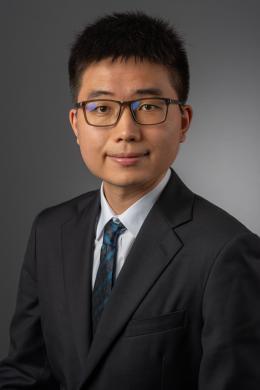
Shengzu Liao
Project Abstract: Developing contactless probers for conductivity and sheet resistance measurements are becoming increasingly important for the semiconductor device production since contactless probing allows for non-destructively measuring materials. In addition, compared with traditional 4-point probers, contactless probers offer fast, accurate, and non-destructive conductivity measurements, which solve the problem of measuring delicate samples such as 2D materials. Various techniques can be applied to develop contactless probers, which enables it to measure materials over a resistivity range of more than 20 decades, from 10−9 to 1011 Ω cm [1]. This project will first review the contactless probing technology and then focus on developing contactless probers based on capacitive probing approach. Finally, 2D materials will be characterized with the developed technique and tool.

Simon Olschansky
Project Abstract: At the current moment, arguably one of the greatest challenges we face as humans is the rising concentrations of carbon dioxide (CO2) in the atmosphere. The rising levels of CO2 have very real and permanent effects on the climate of the planet and on the acidification of the oceans. As countries collaborate to cut down on CO2 emissions, it is becoming clearer that a reduction in carbon dioxide output is not enough to improve the current situation; methods to actively remove CO2 from the atmosphere must also be investigated. One method that has been researched extensively is the thermal reduction of CO2 via catalysis processes. This process, depending on the catalysts used and reaction conditions, moves through three main reaction pathways. The first is named the reverse-water-gas-shift reaction (RWGS) and involves reacting CO2 and H2 over a suitable catalyst to yield water and carbon monoxide (CO). The second involves selective catalytic hydrogenation of CO2 to yield methanol (CH3OH). The third process involves the direct production of hydrocarbons via a combination of CO2 reduction (RWGS) with Fischer-Tropsch (FT) reactions [3]. This pathway is a much more complicated reaction than the previous two.
The research focus for this semester is centered around RWGS reactions involving metal-based and ceramic-based catalysts deposited via dry and wet-impregnation techniques onto a support material. The main body of the research will involve synthesizing and testing the catalyst materials to determine the stability, flow-rate kinetics, and conversion efficiency of these samples. Materials characterization using SEM/EDX and DSC analysis will be useful in understanding how the porosity of the support material changes with the addition of catalyst, and it will also be used to understand how the catalyst responds to different testing conditions.
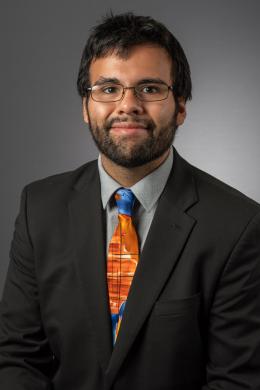
Diego Prado
Project Abstract: One of the things that many are pushing for in the modern world is sustainability across as many disciplines and sectors as possible which means, among other things, a reduction in the amount of energy drawn from the grid. A significant portion of the energy generated in the U.S. is used in the residential and commercial sectors, and of this a significant portion is used simply for heating. Windows are a weak point in many building envelopes and allow for interior thermal energy in the air to leak outside, and are a large source of lost energy, which leads to more power being drawn from the grid into buildings to maintain a comfortable environment for humans. AeroShield Materials Inc. has developed a technology that can help alleviate this problem, a high optical and low thermal transmission aerogel that can be placed inside of a double paned window to provide superior thermal insulation for homes than current industry standard windows. As of right now, the U-factor for the aerogel windows are calculated in a model that uses initial measurements and estimations to model an entire window configuration. For this, a program developed at Lawrence Berkeley National Laboratory in California called WINDOW is used, and my goal is to measure the necessary input properties for the WINDOW program and get an in-practice U-factor value. For the model, UV-vis and Infrared spectra must be measured along with the thermal conductivity.
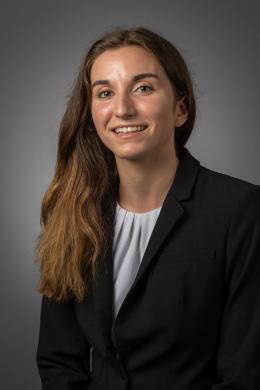
Victoria Scira
Project Abstract: In the window industry, there is a division between energy efficiency and cost effectiveness. AeroShield is bridging that gap through the introduction of high-clarity, super-insulating silica aerogels. These silica aerogel window inserts allow for the customer to experience a higher thermal insulation and energy conservation, all while the product remains cost competitive. As the company progresses towards large scale production, the manufacturing process must be fine-tuned to increase yield and avoid material shrinkage. Material shrinkage must be avoided because it leads to material defects and fractures. As the manufacturing process transforms, the product characterization must be done in accordance with those changes. Determining how the nanostructure and optical properties vary based on changes to the manufacturing process is crucial to the characterization process. To compare the nanostructure of the samples, a small angle x-ray scattering system (SAXS) will be used. Additionally, an ultraviolet-visible-near-infrared (UV-VIS-NIR) spectrophotometer will be used to compare the optical properties of the samples.

Yue Shi
Project Abstract: Electroplating technology in semiconductor offers different advantages, which directly affect the performance of the semiconductor devices. For example, forming a barrier prevents corrosion and increases the service life of semiconductors and enhances the conductivity. Some electroplating materials can withstand extremely high temperatures and protect semiconductors from damage caused by extreme high temperatures. The deposition rate is usually several microns per hour. Electrodeposited alloys have been widely used in recent decades, such as Cu-Sn [1] and Cu-Pb [2].
The goal of this project is to develop a liquid-based metal alloy for probing applications. The liquid metal-alloy solution is expected to be electrodeposited on a semiconductor substrate such as a silicon wafer (with a conductive seed layer). The developed material is expected to provide superior electrical and mechanical properties. Some of the properties that the final metal alloy should have are:
• high resistance to tarnish and corrosion
• high conductivity and durability to maintain low electrical contact resistance (Resistivity: 25µm-cm)
• high strength and hardness to maintain low mechanical wear after millions of touchdowns (Youngs Modulus: >120GPa; Yield Strength: >1GPa; Tensile Strength: > 1GPa; Hardness (Knoop): ~250 at 100g indenter load)

Praveen Varadaraj
Project Abstract: Photopolymers are light sensitive materials that can undergo polymerization upon exposure to light source of various wavelengths. The science behind photo polymerization is using a monomer/oligomer (typically in liquid state) in conjunction with a photoinitiator system which, converts the photolytic energy into reactive species that drive the chain growth. The ratio between the monomer and oligomer along with photoinitiators dictates the final properties of the photopolymerized material. The development of Soft Elastomeric photo polymeric resins offering decent tensile strength (>5MPa) and high elongation (>200%) while maintaining low viscosity (1500 cps) has been a tough challenge. Issues that often plague the development of this kind of resin systems are poor printability and under curing, low hysteresis and yellowing of parts over time when exposed to light. This is because adjusting the monomer/oligomer ratio for high elongation often results in high viscosity which impedes the development of these resins for DLP based printers. In this paper we disclose a potential formulation and its reactivity, physical properties and printability metrics.
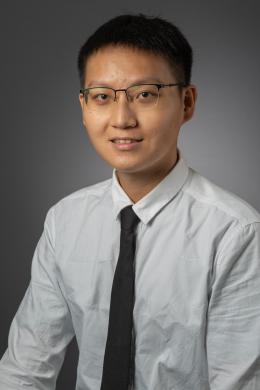
Chun-Hao Wang
Project Abstract: With the growing demand for renewable energy rises the demand for catalysts. Ceramic catalyst supports play an important role in the development of catalysis reactions. Ceramic catalyst supports provide rigid, chemically stable surfaces for catalyst materials to be evenly dispersed on and retain their morphologies. Besides providing strength and stability, the structure of ceramic catalyst supports, such as monoliths and beads, also provide catalyst materials with a larger surface area for heterogeneous catalysis, which involves converting gaseous or liquid reactants with bulk catalyst materials.
This project aims to develop a lab-scale method of preparing porous ceramic supports with loaded catalysts. The project will start with literature studies of known methods for preparing ceramic monoliths and beads, then feasible methods will be applied to new material formulations that meet our needs. We will be building a lab-scale setup with what we’ve learned, and create our own catalyst supports loaded with catalysts. The resulting products will go through a variety of testing using materials science tools such as BET, SEM, optical microscopy, etc.
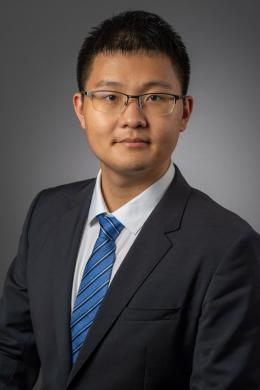
Menghao Wang
MSE 5070
This course emphasizes entrepreneurial driven technology designs (forward engineering) by integrating mechanical, chemical, and materials engineering through the understanding of early stage product development complexities. These complexities include staging invention and innovation via the critical selection of materials, assessing product mechanics and processes for final product function, performance, reliability, cost and technical marketability. Students will attend lectures, participate in establishing a Tech Startup integrated into the Johnson School MBA mentoring program, attend startup design reviews, give a series of individual/group presentations, and write a startup issue paper.

Grace Wu
Project Abstract:
Arc flashes are one of the most hazardous or deadly workplace incidents. Arc Flash events occur when a burst of high voltage electrical energy travels through the air, caused by a breakdown between conductors, and carry a large amount of heat, resulting in temperatures as high as 35,000°F and the release of toxic fumes. Up to 30,000 incidents occur in the U.S. each year, with the lowest chance of survival around 60% based on age. Arc flash-resistant PPE is made to protect users from these potentially dangerous environments by dissipating the high amount of energy from the arc flash event. Current arc flash PPE does not fully protect or address the interaction of unknown gas fumes that occur during the events.
MOFs are chemical structures that can selectively capture or decompose toxic compounds. The Hinestroza research group has worked on developing methodologies to deposit metal-organic frameworks (MOFs) on protective clothing fabrics which are inherently chemically inert. Low pressure plasma has been used to activate the surface and to create functional groups that are amenable to the anchoring of metal clusters. These metal clusters are key to grow MOFs with a customized molecular architecture tailored to capture specific toxic compounds.









